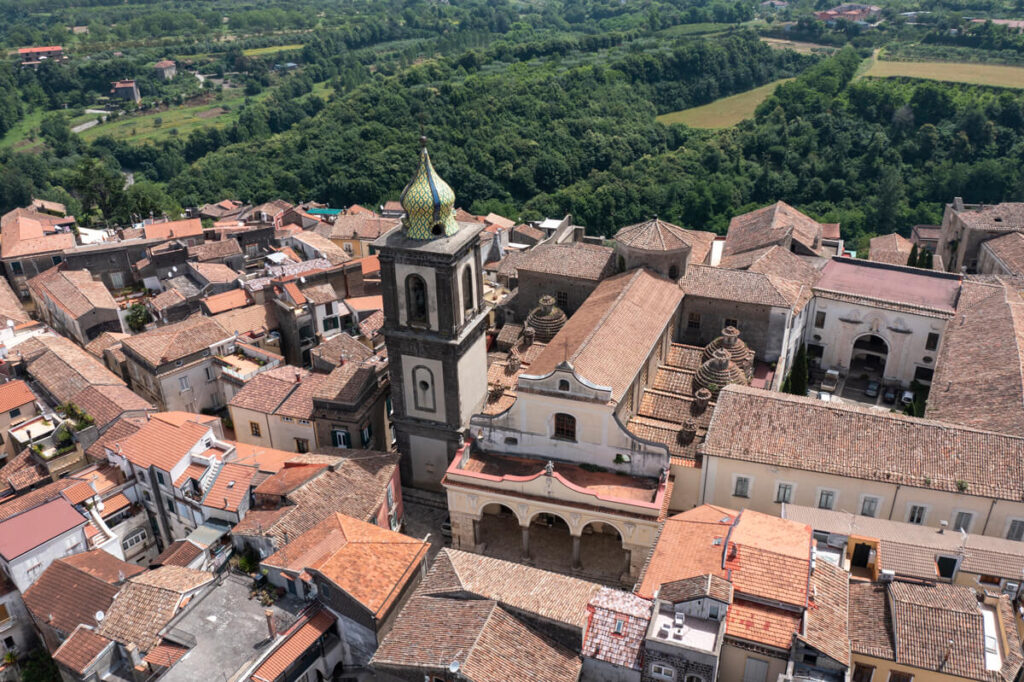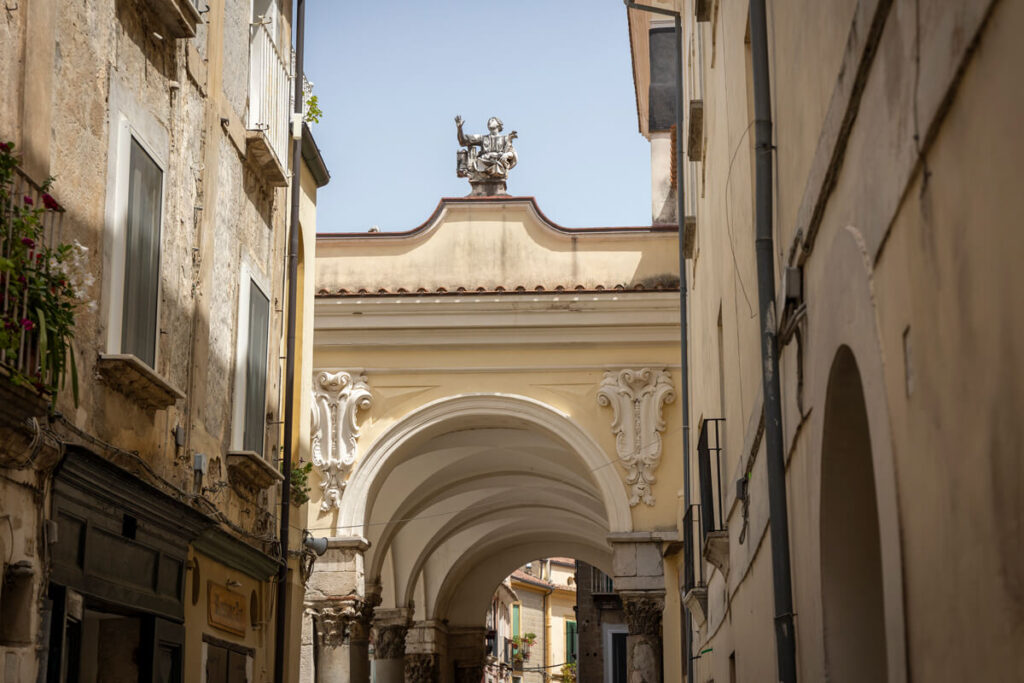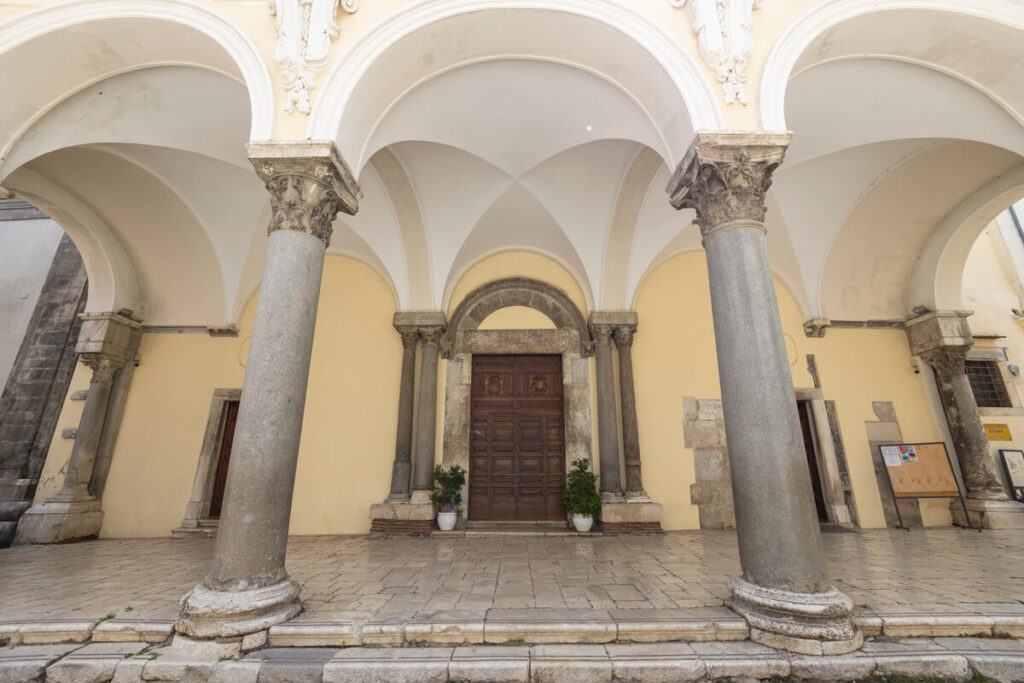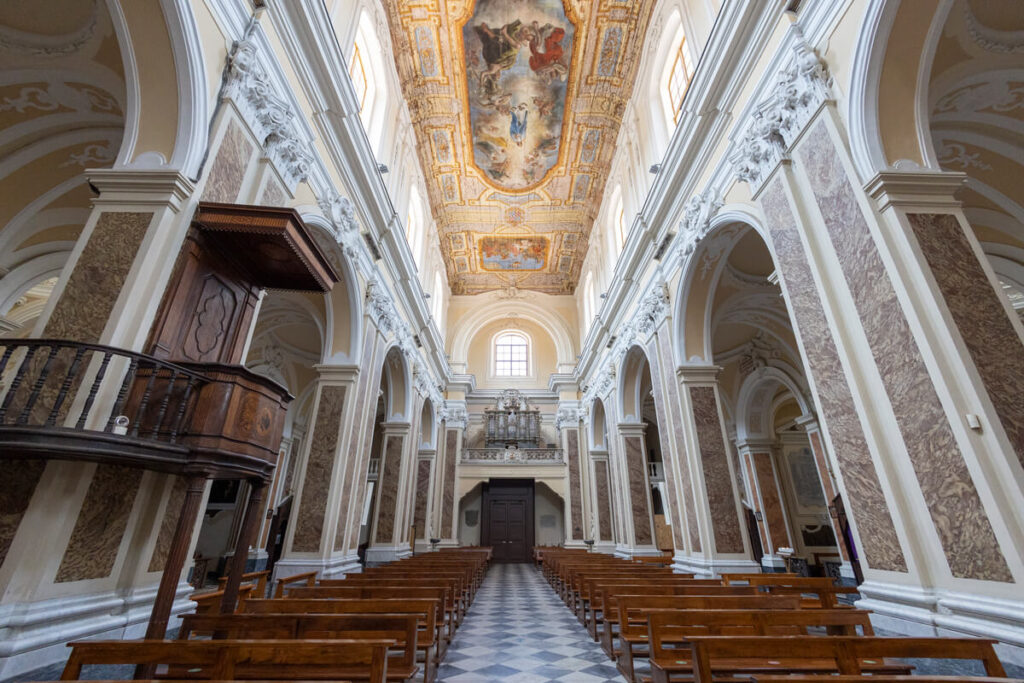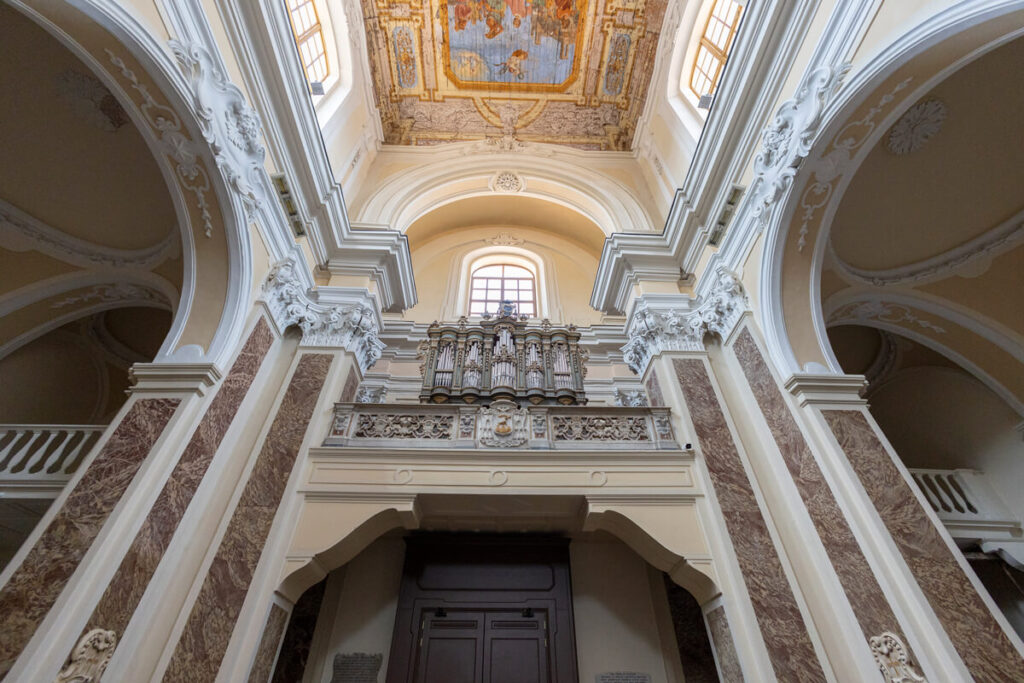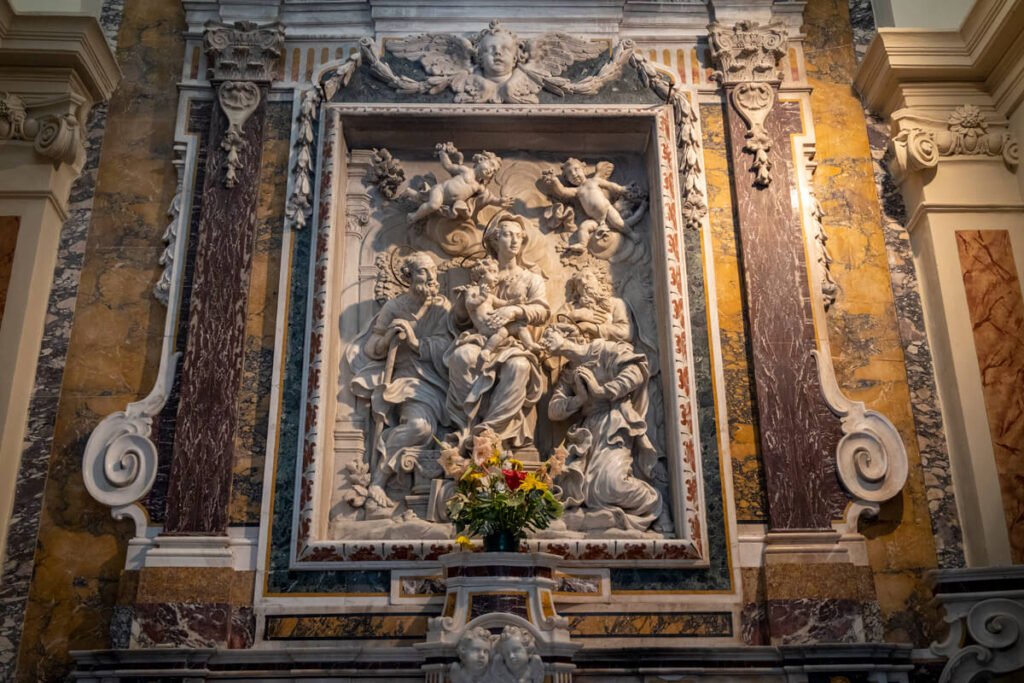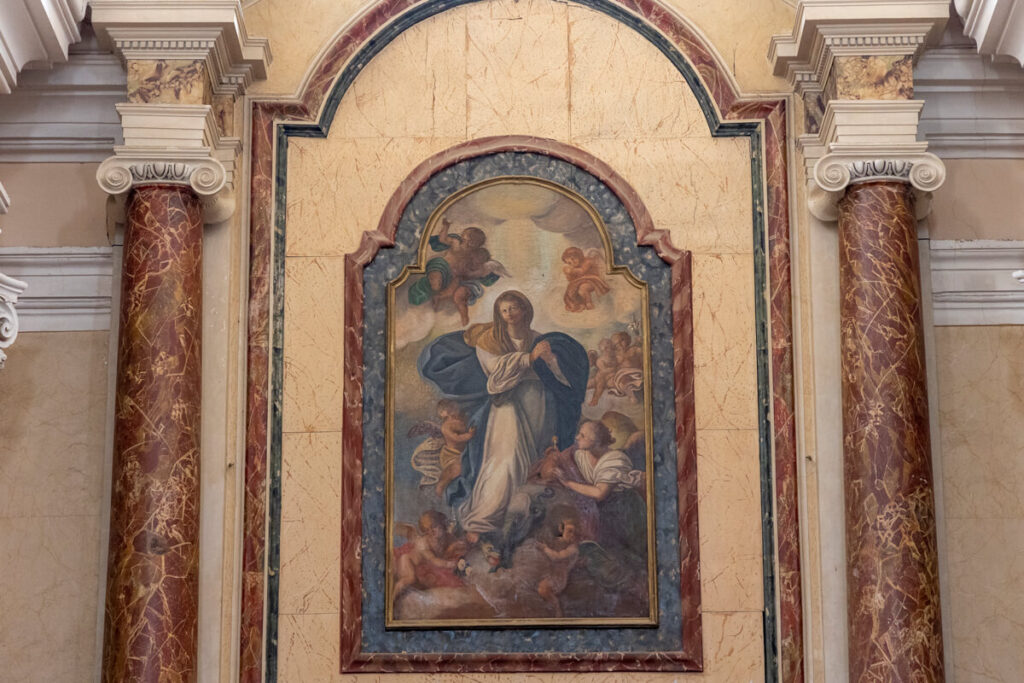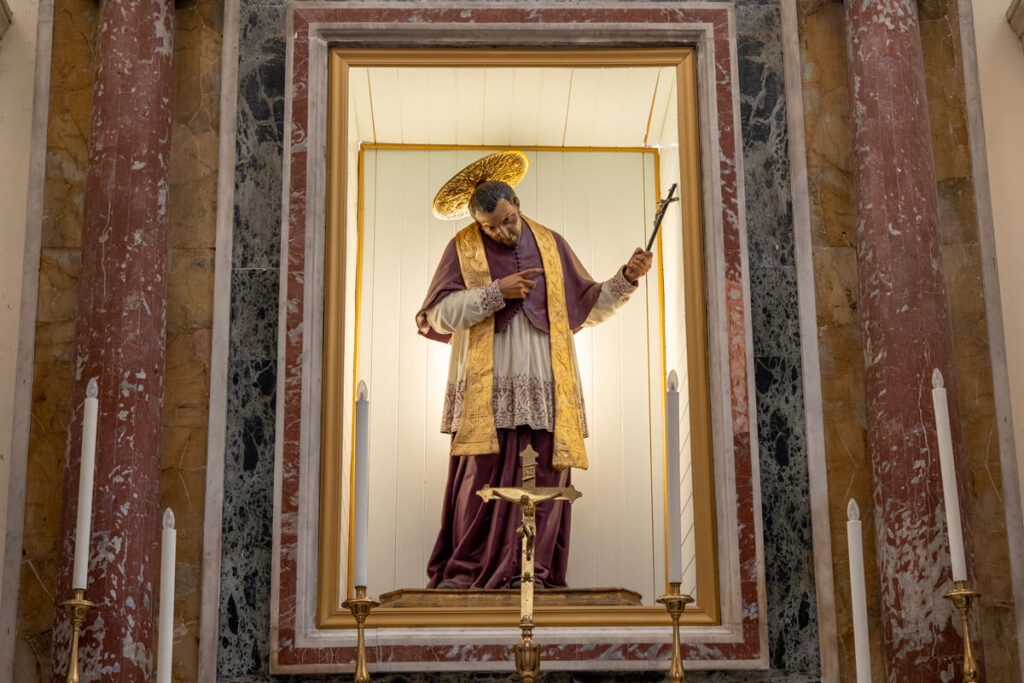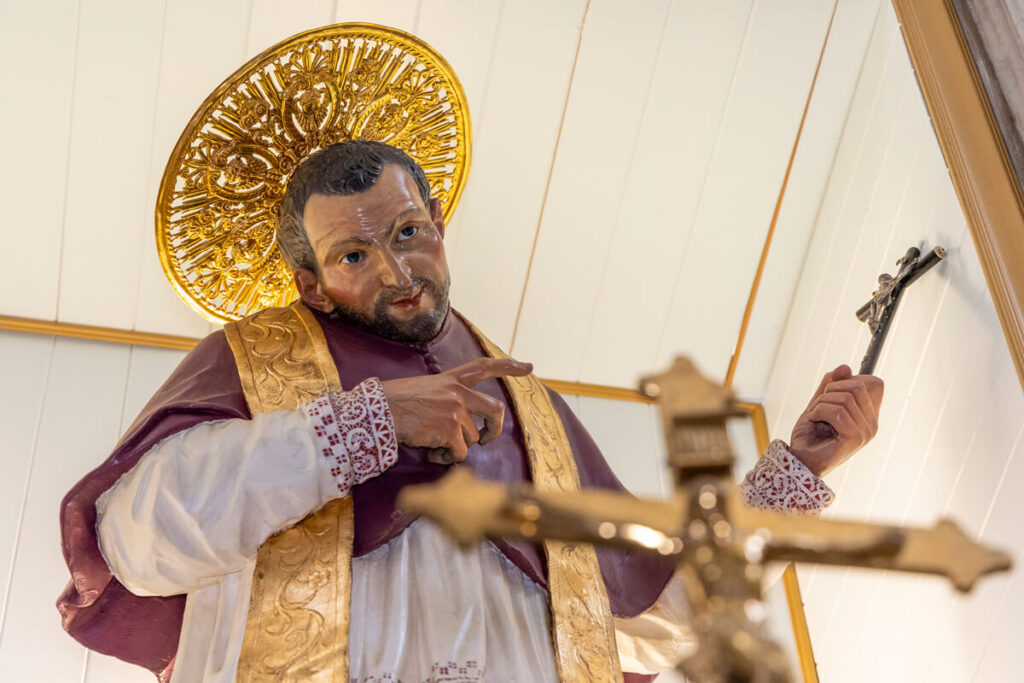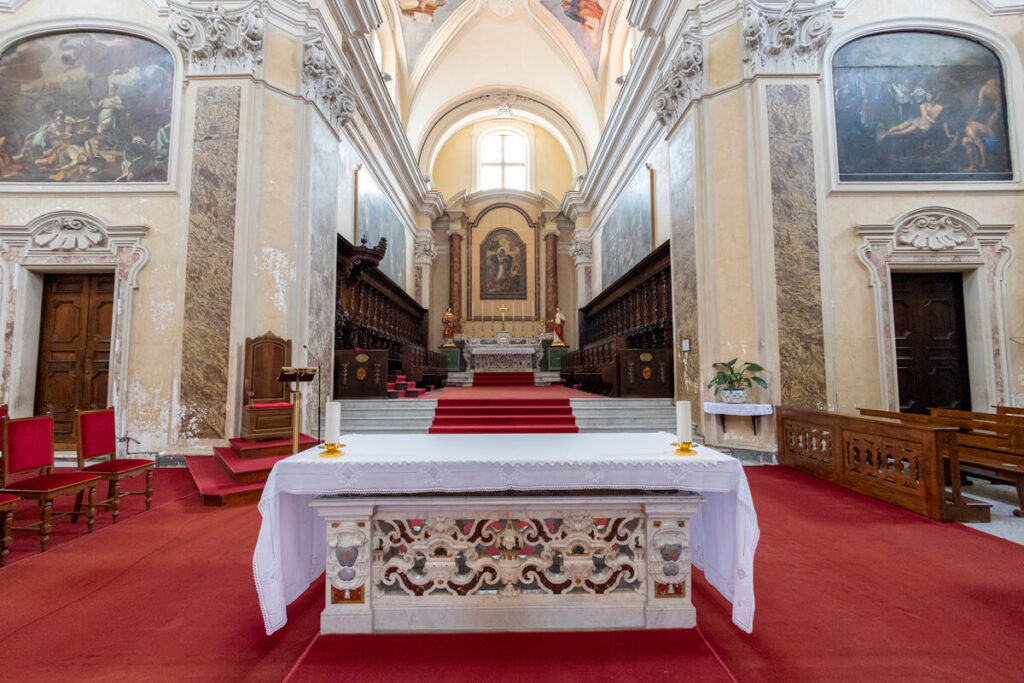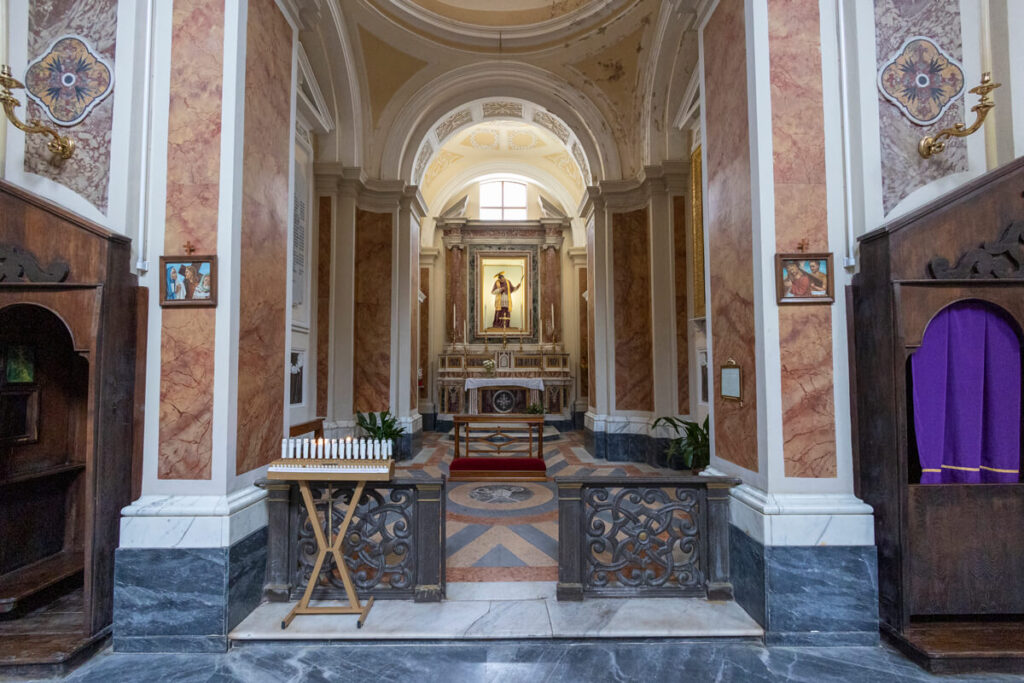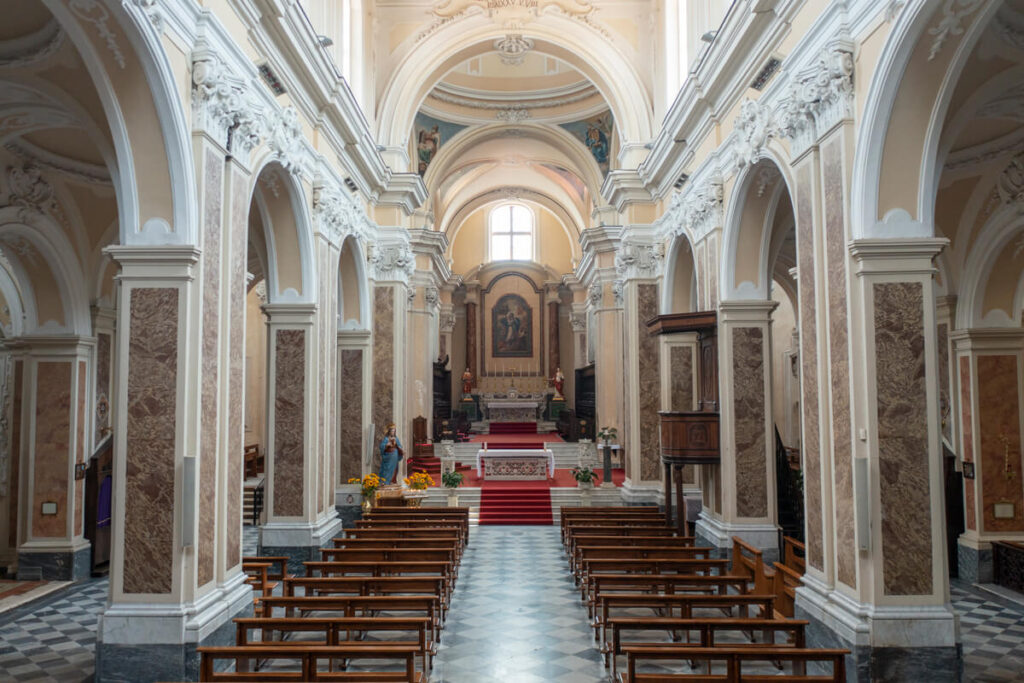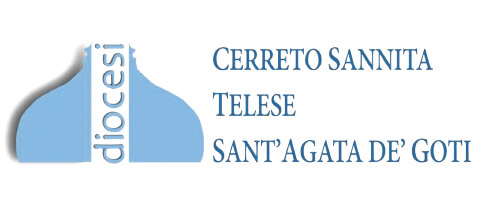Almost as if to emphasise its sumptuousness, the atrium still forms a kind of caesura in the urban layout of the city, interrupting the main street at one point.
The construction of the cathedral church dedicated to St Virgin Mary of the Assumption was initiated by Bishop-Count Madelfrid after 970.
The early medieval cathedral was completely renovated in the 12th century.
Le The visible parts belong to two eras:
10th-12th century
Atrium with the three Romanesque portals on the facade; The epigraph on the wall at the right entrance, which attests to the foundation on the Santagatese rock of a castrum for veteran soldiers by Octavian Augustus in 42 BC. Corinthian columns and reused Roman rubble stones; Paving below the high altar, whose mosaics are similar to those in the Church of San Menna, which are interwoven in opus Alexandrinum, revolving around white marble discs where plant motifs and monsters of oriental design are engraved. Of the entire floor, which was partly destroyed during restoration work in the early 20th century, approximately 4.95×4.84 metres remain near the chancel staircase and 4.73×4.51 metres in front of the door leading to the sacristy;
Crypt: Underground room below the transept, for intimate religious ceremonies, was part of the Norman cathedral. It is supported on cross vaults with columns and capitals, exceptional for their form and carved symbolic messages. They belong to various periods between the 10th and 14th centuries and come from various parts of the world. On some of the capitals one can admire sirens, knights with lances on their heads, satyrs, fish. On the walls, some paintings of St Christopher, the Madonna, the Crucifixion and the Adoration of the Magi.
18th century
The Norman Cathedral was rebuilt after the 1688 earthquake, on the initiative of Bishop Muzio Gaeta, because it was badly damaged. Work began in 1728 and was completed in 1755.
The interior space is divided into three pillared naves lined with marble. The ceiling is in painted wood, created in 1878 at the behest of Bishop Ramaschiello and dedicated to the Immaculate Madonna.
On the sides are depictions of the martyrdom of Saint Agatha and Saint Stephen.
The walnut choir, made around 1650, featuring fanciful human faces and monstrous animals is the work of the inlayer Alessandro De Rosa, while the organ, placed above the entrance door, was made in the 1840s by Donato Abate with the collaboration of Andrea Genovese for the inlay work. Alessandro De Rosa is also the author of the doors of the main wooden door in which the carved figure of the Virgin of the Assumption, to whom the Church is dedicated, and the images of St Agatha and St Stephen, co-patrons of the city, can be seen.
The cathedral chapels are dedicated to Carmel, St Alphonsus, the Nativity and St Anne, in which we can find works by Tommaso Giaquinto, Lorenzo Fontana and Giovan Battista Antonini.
Where is located
Piazza Duomo
Original destination
Current destination
Cathedral of Santa Maria Assunta


The Church of the Carmine in the square of the same name is at a focal point in the historical centre, halfway between the Ducal Castle and the Cathedral.
The floor covering the church is the oldest of its kind in southern Italy, dating from around 1098: the lithostratum consists of 50 squares
The church is built according to the canons of Gothic art and has undergone extensive modifications and significant disfigurements over time.


